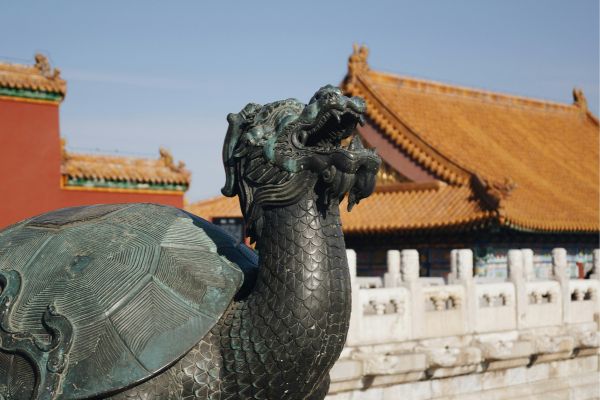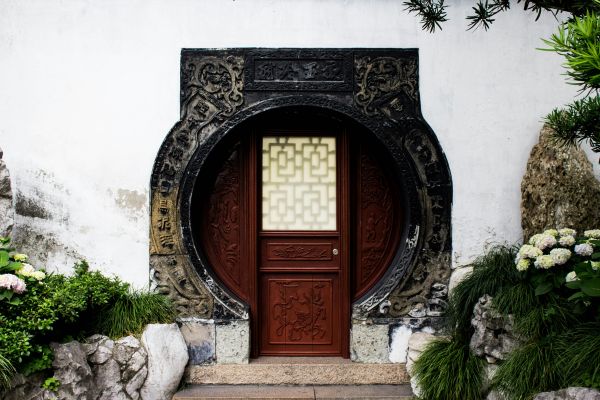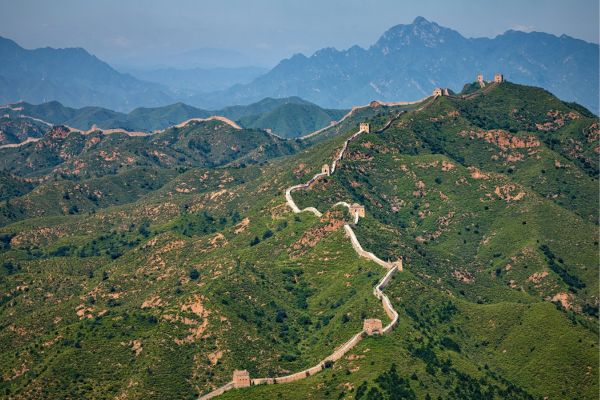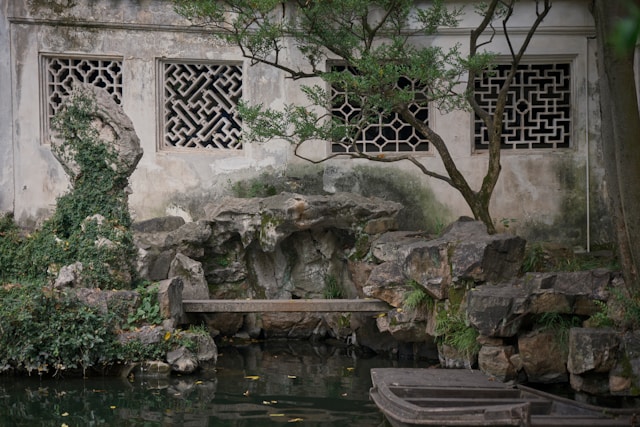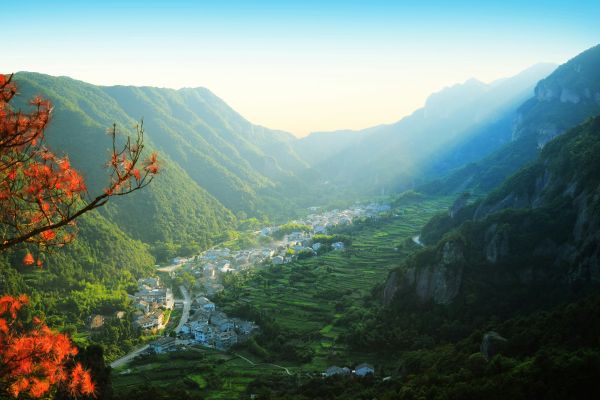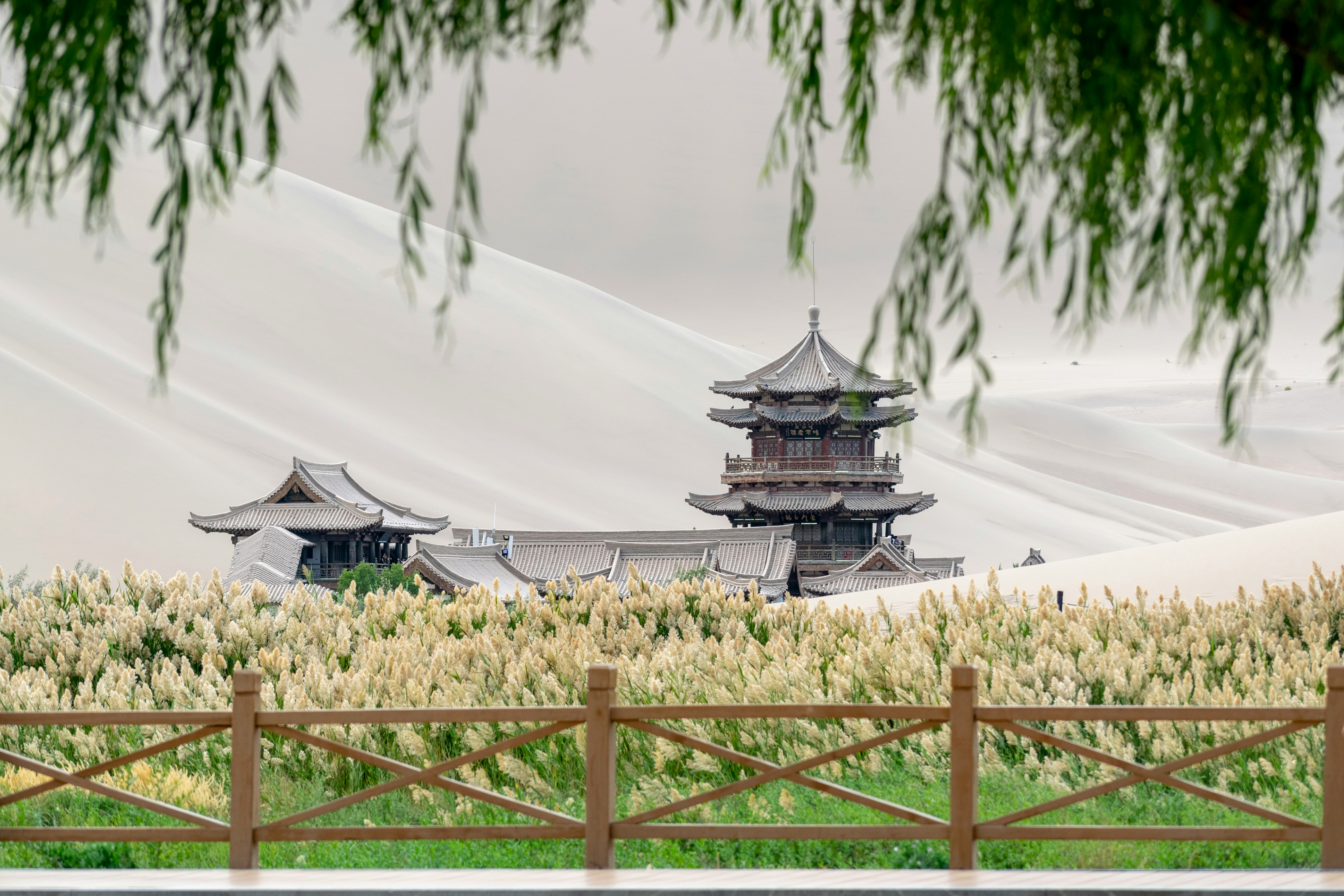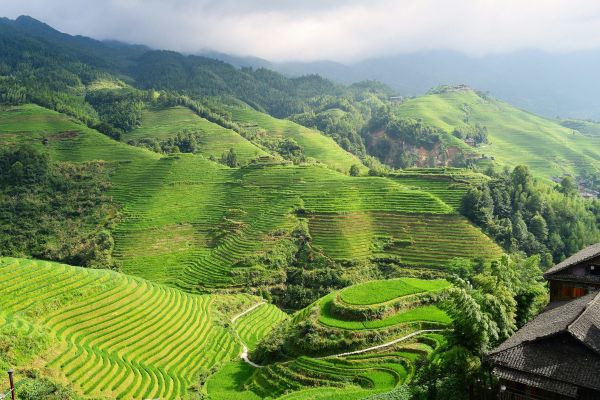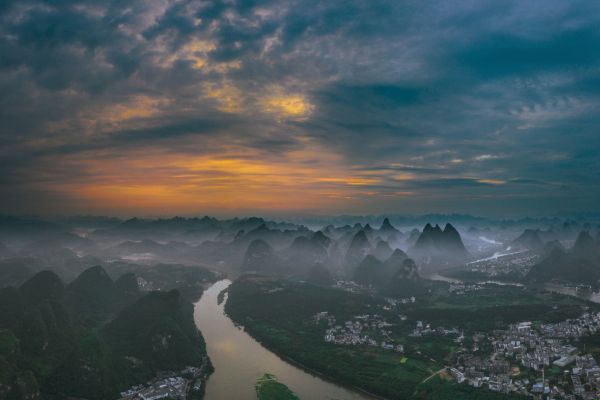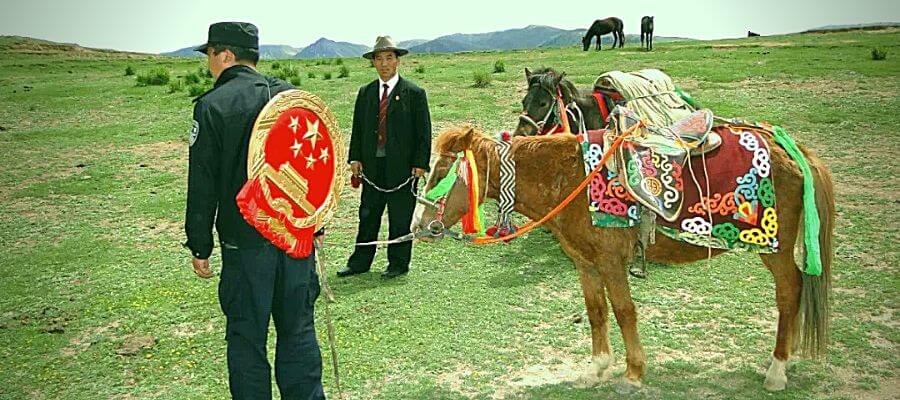
Imagine this picture below: A judge and a law clerk walk on a small path in the Chinese countryside while leading a horse behind them, with all the materials and tools for trial and the national emblem on its back.
When they arrive at the village hidden deep in the grassland, they will find a suitable place, hang the national emblem and set the table and chairs——a simple courthouse appears. The villagers’ disputes will be resolved in this regular circuit court.
This kind of circuit trial, known as the courthouse on horseback, mainly exists in mountainous areas, grasslands, Gobi and fishing villages in China.
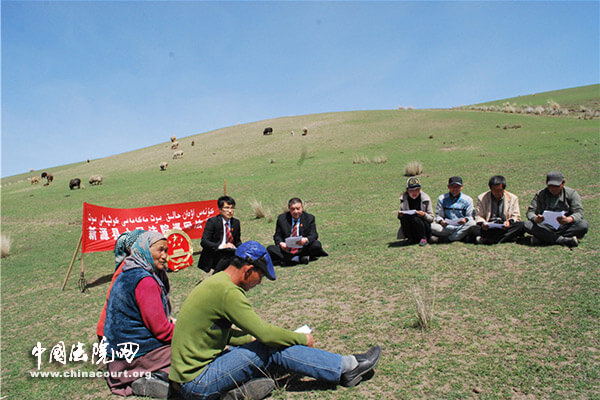
(A hearing on the grassland in Xinjiang. [1] The judge was sitting in the middle, with the national emblem and the name of the court written in both Chinese and Uighur language behind him. The litigants were on both sides, and the sheep were grazing afar.)
Judge Wang Jun (汪军) of the 1st Civil Division of the Supreme People’s Court(SPC) said that the courthouse on horseback was one way of circuit trial. The circuit trial refers to that, in order to facilitate the litigants to participate in the process of litigation, the primary courts will send judges carrying necessary materials to remote areas with inconvenient transportation and a sparse population to hear the cases. The judges will accept the cases, hold a hearing, mediate between the litigants and settle a lawsuit on site. [2]
To reach these places, the judges need to make the best of every possible means of transportation, such as horses, yaks, ropeways, boats. The circuit trial has become an outdoor adventure.
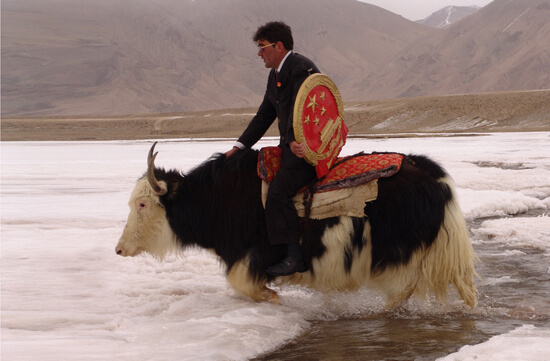
(Location: Xinjiang. The judge had to ride a yak because there was no way for vehicles. [3])

(Location: Chongqing. The judge was on the ropeway, because it was the only way to cross the river. [4])
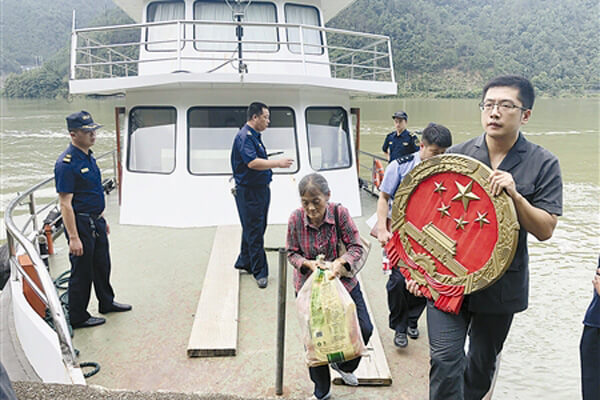
(Location: Zhejiang. The judge had to take a barge because the storm had destroyed the road. [5])
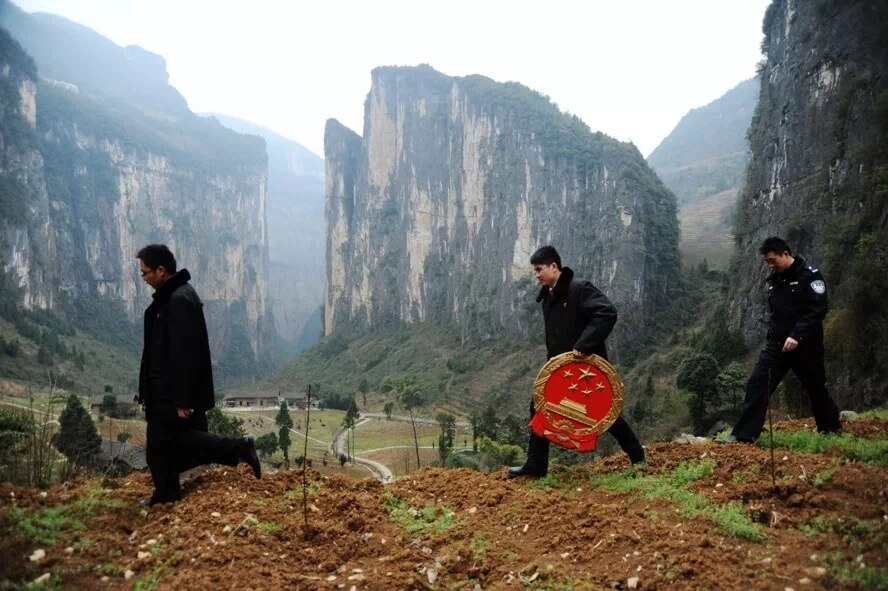
(Location: Chongqing. The Judges were walking in the mountains. [6])
In China, many areas are vast and sparsely populated, which is a big problem for transportation and communication. It is difficult for the residents to settle their disputes in a proper court faraway. If the court can not handle these disputes, it will not only jeopardize the realization of justice, but may also lead to a situation that people tend to resolve disputes through retaliation and violence. Judges going to the countryside to hear a case will bring back justice to the local area and protect the social stability of the village.
Some students from the School of Law, Tsinghua University published one of their surveys on social media, introducing the situation of the circuit court in Urumqi County, Xinjiang where they spent the summer of 2019. [7] According to their observations, some local herdsmen are in a state of frequent migration, and some even live at an altitude of more than 4,000 meters. When the dispute occurs, they usually cannot go down the mountain and bring a lawsuit to the court. Therefore, the herdsmen need judges to go up the mountain to hear the case for them.
The circuit trial has existed since 1932. At that time, the Chinese Soviet Republic, the first regime established by the Communist Party of China, enacted provisions allowing judges to go on circuit to hold trials on the spot where the dispute occurred. [8] After the People's Republic of China(PRC) was founded in 1949, it also promulgated a number of laws and regulations, confirming the mode of the primary courts holding circuit trials. This mode has now been stipulated in the PRC Civil Procedure Law. [9]
However, circuit trail by horse riding was created by local judges. In the 1950s, Wengniute Primary Court of Inner Mongolia Autonomous Region provided horses for three judges who held circuit trials to help them pass the areas where sandstorms often occurred. After several decades, the courthouse on horseback has gradually become a symbol of circuit trials of China’s primary courts in the countryside. Judge Cao Debao (曹德宝), one of the three judges, is still alive. He often recalls the friendship he developed with his horse on the road at that time. [10]
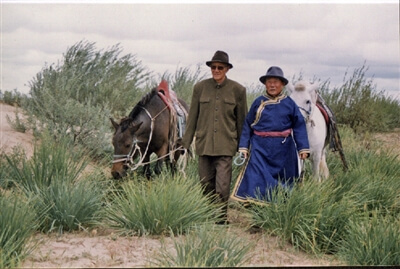
(Judge Cao Debao (left), at the age of 85, returned to the road of circuit trial where he had traveled in his youth.)
In 2006, there was a Chinese movie “Courthouse on Horseback” (马背上的法庭[11]) that described this type of circuit trial and won the Best Film Prize in Horizons Competition at the 63rd Venice International Film Festival.[12] This film is also one of the most recommended legal films for many Chinese audiences. The starring role, Mr. Li Baotian (李保田), is a famous Chinese actor that all my family members like.
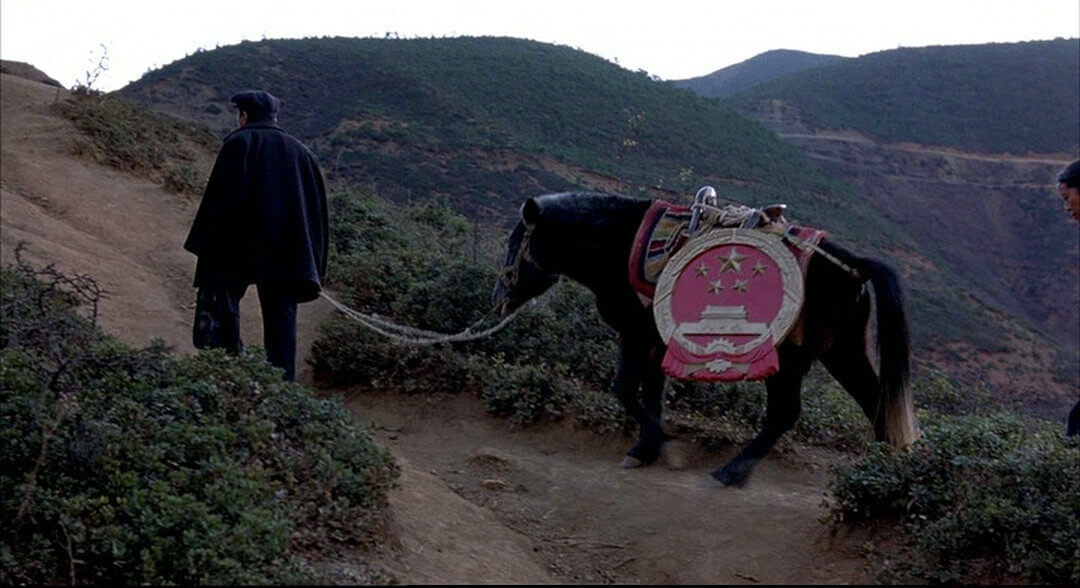
(Still from “Courthouse on Horseback”)
Now, China's primary courts have been equipped with vehicle-mounted courthouses for judges to go to the villages where the road is safe for traffic to hold circuit trials. This has greatly improved the working environment for those judges.

(Location: Inner Mongolia. The vehicle-mounted courthouse was modified by a van,[13] with a "police" sign on the front and a "court" sign on the side, indicating this was a judicial police’s car. )
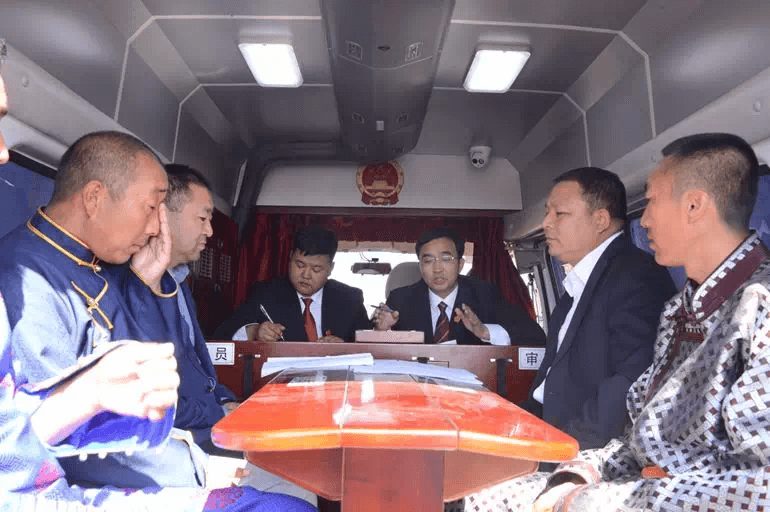
(Location: Inner Mongolia. A courthouse in the carriage, with the judge in the middle and the parties on both sides. [14])
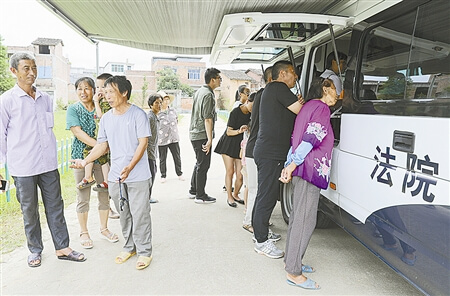
(Location: Jiangxi. Outside the window of the car, on which painted the sign of court, the villagers were watching the hearing in the vehicle-mounted courthouse. [15])
In the end, I would like to share the song "Judges on the Ropeway" (索溜法官) and its MV created by judges in Chongqing with you.[16] This song, represented in the Chinese folk singing method, talks about the judges' circuit trial in the mountains.
Or, View from Mainland China
References:
[1] 《新疆新源法院:巡回在草原上的“轻骑兵”》, https://www.chinacourt.org/article/detail/2015/04/id/1606256.shtml
[2] 《为什么中国有“马背上的法庭”?》, https://www.chinacourt.org/article/detail/2019/09/id/4482547.shtml
[3] 《为什么中国有“马背上的法庭”?》, https://www.chinacourt.org/article/detail/2019/09/id/4482547.shtml
[4] 《为什么中国有“马背上的法庭”?》, https://www.chinacourt.org/article/detail/2019/09/id/4482547.shtml
[5] 《带着国徽去开庭》,https://www.chinacourt.org/article/detail/2019/07/id/4197085.shtml
[6] 《燃!带着国徽去审判,《溜索法官》MV来了》,https://mp.weixin.qq.com/s/VyfS470X0FJgjZ_XpBLfWQ
[7] 《马背上的法庭——永丰渠法院》,https://mp.weixin.qq.com/s/GewNuCLMyBlDu6S-1VqaxQ
[8] 《中华苏维埃共和国裁判部暂行组织及裁判条例》
[9] 参见《1950年7月27日的第一届全国司法会议》、1951年《中华人民共和国人民法院暂行组织条例》、1991年的《中华人民共和国民事诉讼法》、2005年《关于全面加强人民法庭工作的决定》、2009年《关于进一步加强司法便民工作的若干意见》、2010年《关于大力推广巡回审判方便人民群众诉讼的意见》、2011年《关于进一步加强新形势下人民法院基层基础建设的若干意见》、2018《关于为实施乡村振兴战略提供司法服务和保障的意见》。
[10] 《从“马蹄”到车轮:沧桑68年的变与不变》,http://rmfyb.chinacourt.org/paper/html/2017-12/23/content_133541.htm?div=4
[11] https://www.imdb.com/title/tt1064775/
[12] https://en.wikipedia.org/wiki/63rd_Venice_International_Film_Festival
[13] 《兴安盟:巡回审判,草原深处的和谐使者》,https://mp.weixin.qq.com/s/WGSCjHC78grfqEg4vgW03w
[14] 《兴安盟:巡回审判,草原深处的和谐使者》,https://mp.weixin.qq.com/s/WGSCjHC78grfqEg4vgW03w
[15] 《石上法庭:巡回审理赡养案》,http://rmfyb.chinacourt.org/paper/html/2019-08/19/content_159176.htm?div=2
[16] https://v.qq.com/x/page/s0513r6oa6f.html
Contributors: Guodong Du 杜国栋
